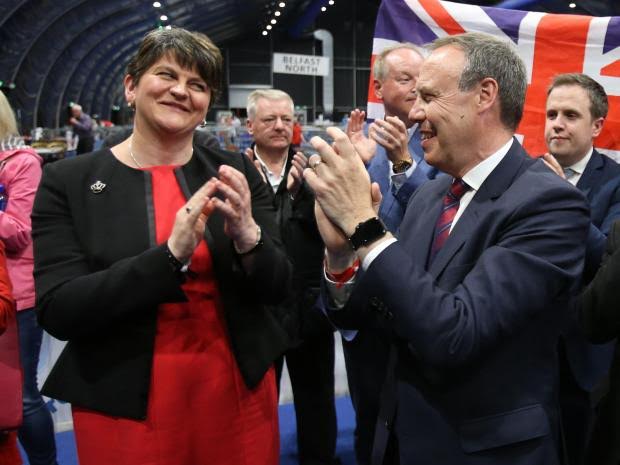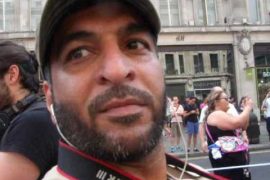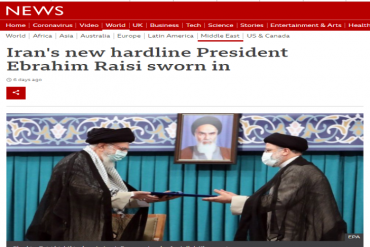Written by CAMERA intern Aron White
The UK election last week ended with a surprising result – the Conservatives lost their majority, and they now have to negotiate a ‘confidence and supply’ agreement with the DUP, a small party from Northern Ireland. This situation is refocusing attention on the challenges of Northern Ireland, which have not been in international headlines for some twenty years. For any supporter of Israel, the story of Northern Ireland is vital to understand, as it helps to clarify the double standards that exist against Israel in international opinion. In the conflict in Northern Ireland, the actions taken are labelled peaceful, whereas when those same actions are taken by Israel, they are called “racist” or “apartheid”.

Here is a two-minute background to the conflict in Northern Ireland. Since 1800, there were four countries joined together to be in the United Kingdom – England, Scotland, Wales and Ireland. Around one hundred years ago, most of Ireland split off from the UK, to become an independent country called the Republic of Ireland; so the UK was now England, Scotland, Wales and Northern Ireland, the top section of Ireland which did not split off. However, beginning in the late 1960s, there was a strong and often violent campaign fought in Northern Ireland for it to break off from the UK, and to become part of the independent Republic of Ireland. This campaign was led by the Catholic IRA and Sinn Fein (more on them below), who fought against both Protestant groups who wanted to remain in the UK, as well as the British Army. The tactics of the IRA are infamous, as they included bombings and terror attacks, and their attacks lasted for thirty years from 1969 to 1998. This period is known as “The Troubles” and it claimed the lives of 3,500 people, 1,800 of them civilians. In 1998, the Good Friday Agreement was signed between Sinn Fein and the other parties, in which Sinn Fein and the IRA promised to stop their violence, and to join the other parties in working to heal the old divides – they would continue arguing for Northern Ireland to leave the UK, but through the political process, not through violence.
There are many links between the conflict in Northern Ireland and the Israeli/Palestinian conflict. In both, the two sides are generally split both on religious lines – Jewish/Muslim in Israel, Protestant/Catholic in Northern Ireland. More significantly, the IRA was launching its bombings in Northern Ireland in the 70s and 80s at the same time as the PLO, lead by Yasser Arafat, was launching its bombings and hijackings in Israel. The two groups had strong links, with the IRA and PLO training together in Syria, exchanging bomb making techniques, and even launching a joint attack together in Brussels in 1979.
But what is most significant about the Northern Ireland conflict, is that it helps show the double standard that exists in coverage about Israel. Belfast is the capital of Northern Ireland, and within it there are both Protestant and Catholic communities. All around the city there are still to this day close to 50 “peace walls,” physical walls that keep Protestants and Catholics apart.




These walls began to be set up by the British army after rioting in Belfast in 1969. The walls were set up as a security measure to stop violence between the two communities, and over the years, more and more were built. The walls can be up to 30 feet high, and many have barbed wire on top. Some of the walls have gates in them to allow people to pass through them – they are open at day, and closed at night. In fact, there have been many peace walls built even after the Good Friday Peace Agreement in 1998, and peace walls now exist outside Belfast all over the country – there are currently 109 peace walls in Northern Ireland. Each year, tensions flare near some of the central walls during the marching season, where the Protestant side has a large public march through the centre of Belfast. This video captures the ongoing tensions between the two sides, and the walls that keep the peace.
Israel of course, also built a wall in order to stop violence. The Second Intifada claimed the lives of over 1,100 Israelis, as suicide bombings in cafes, buses and cinemas took the lives of innocent civilians all over the country. In 2003, Israel began constructing a barrier after attacks originating in the West Bank killed hundreds of Israelis. Since the building of the wall, there has been a 90% reduction in the number of terrorist attacks in Israel.
Yet somehow, Israel’s wall is often labelled not a security wall, but an “apartheid wall.” Why? And why are the walls keeping Catholics and Protestants apart in Northern Ireland called “peace walls” but the walls keeping terrorists out of Israel is an “apartheid wall”?
The first walls in Northern Ireland were built by the British army after rioting in Belfast in 1969, during which 8 people were killed. Israel acted to build the wall after hundreds of people had been killed – so how dare the world be outraged, and condemn Israel for building the wall to protect its own citizens, when the UK built walls after attacks of a much smaller scale?
Around the world, there are many countries who are building walls to protect their citizens. Saudi Arabia is building a 600 mile wall to keep out ISIS. India is building massive walls on its borders with Bangladesh and Pakistan. One can agree with these decisions, or disagree with them. But in the end, there is only one country who built a wall to defend its citizens from murderous attacks on its civilians that is called apartheid for doing so – and surprise, surprise the one country singled out for unfair criticism is Israel. Those who call it this warp a story of Israeli defense into one of Israeli aggression, and they expose only their own double standards.
(A version of this post was also published at The Algemeiner)





